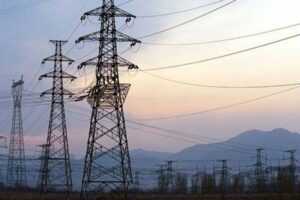THE National Grid Corp. of the Philippines (NGCP) said the completion of some major transmission projects points to the need for a shift in focus to investing in power generation.
“Attention can now be properly trained at ensuring enough investments in the generation sector to meet increasing demand,” the company said in a statement late Monday.
The Philippines’ main island grids went on red and yellow alert multiple times between April and June, due to forced outages or the operation of power plants below their rated capacity in the face of El Niño and elevated heat. Last week, yellow alerts were raised on the Luzon grid for two days.
A yellow alert is issued when the operating margin is insufficient to meet the transmission grid’s contingency requirements. A red alert will then be raised if the supply-demand balance deteriorates further.
President Ferdinand R. Marcos, Jr. said in his third State of the Nation Address on Monday some transmission projects that were energized and partially energized this year that will accommodate additional power capacity.
“With these systems currently operating at capacity, these major power lines shall contribute to the efficient power exchanges not only between Luzon and the Visayas, but also involving Mindanao,” Mr. Marcos said in his speech.
NGCP, the country’s sole grid operator, welcomed the President’s support, which it took to be “a clear sign that our hard work is recognized as having made a positive impact and is fully aligned with his vision for a strong economy.”
“As we are all working towards ensuring the reliability of the country’s transmission network for a more resilient power industry, we reiterate our call for a more coordinated, resource-adequacy based, and holistic approach to energy planning, that considers the three main links to the energy supply chain: supply, bulk transmission, and retail distribution,” the grid operator said.
In 2024, the NGCP energized the P20.94-billion Mariveles-Hermosa-San Jose 500 kilovolt (kV) transmission line at its full 8,000 megawatts (MW) of capacity.
The grid operator also fully energized the P67.98-billion Cebu-Negros-Panay 230-kV transmission backbone in April, strengthening the link among three major islands in the Visayas.
The P51.3-billion Mindanao-Visayas Interconnection achieved full operational status in January, enabling power sharing between Mindanao and the Visayas with a capacity of up to 450 MW, expandable by another 450 MW.
Last week, the Department of Energy said portions of NGCP’s Cebu-Bohol 230-kV interconnection project have been energized, with full completion expected in December.
NGCP Spokesperson Cynthia P. Alabanza said last week that the company is hoping that the Energy Regulatory Commission (ERC) will issue a decision that ensures fair recovery of its investments in building transmission projects.
ERC Chairperson and Chief Executive Officer Monalisa C. Dimalanta has said that the commission seemed to have demonstrated “clearly” its commitment to “diligently” complete the NGCP rate reset.
Ms. Dimalanta said that the ERC is hoping to complete the rate reset for the fourth regulatory period by the end of the month.
The rate reset process is usually a “forward-looking” exercise that requires the regulated entity to submit forecasted expenditures and proposed projects over a five-year period.
The fourth regulatory period covers 2016 to 2020, while the fifth regulatory period covers 2021 to 2025. — Sheldeen Joy Talavera
